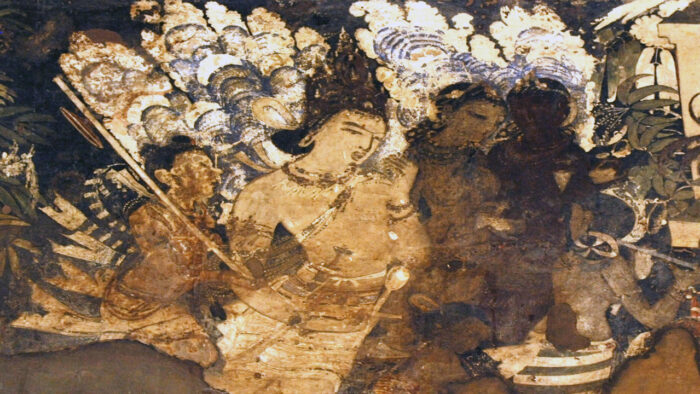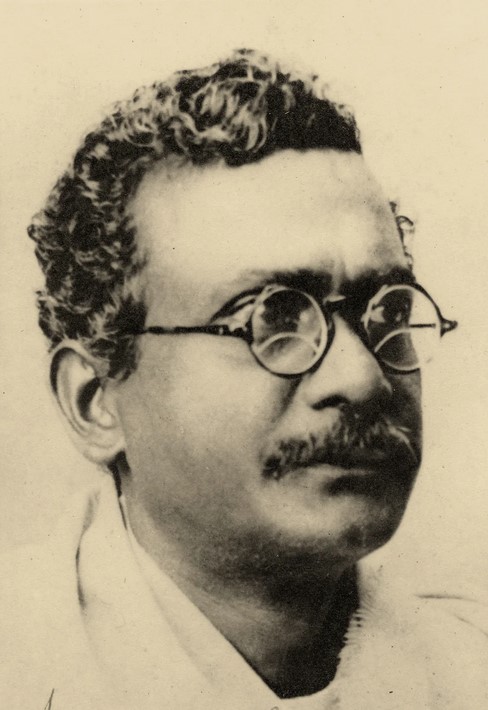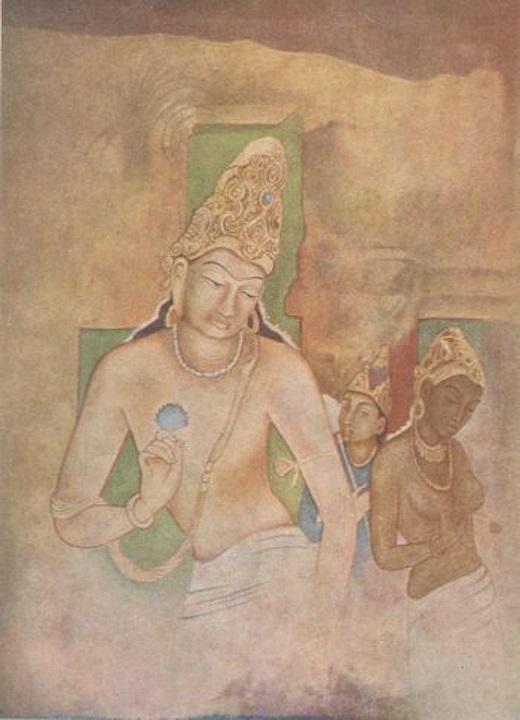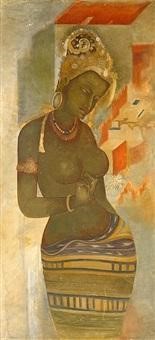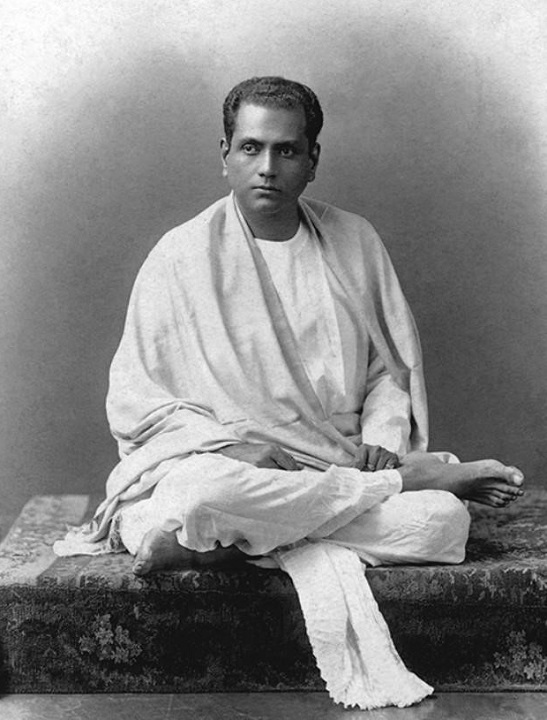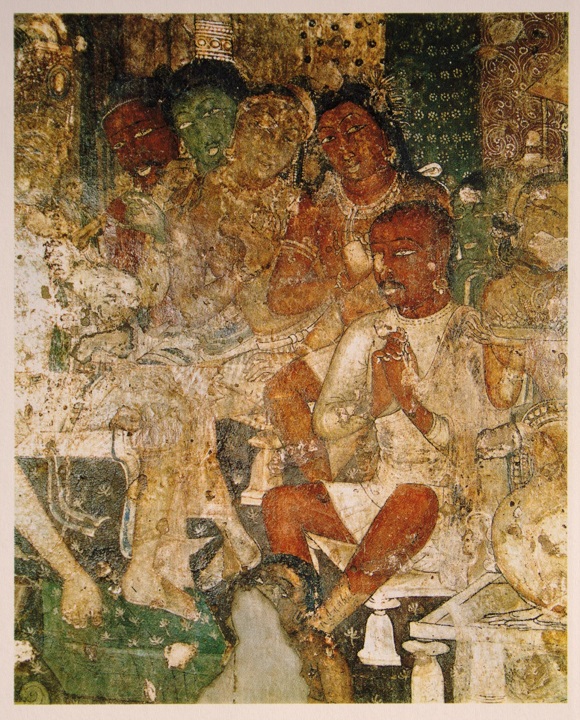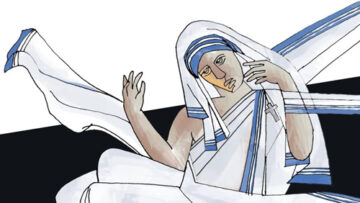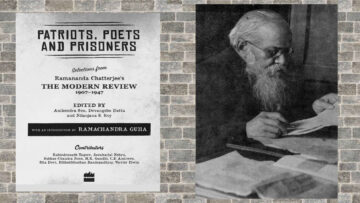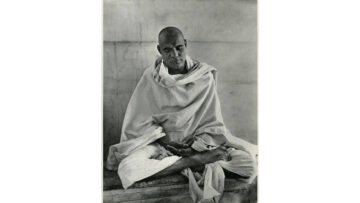In his introduction to Asit Haldar’s book, Abanindranath Tagore (1871-1951) referred to the Ajanta Caves as the last dazzling light of Indian art—and compared the journey of the young artistes of Bengal to those caves as a pilgrimage. In his latter-day memoir, Abanindranath made it clear as to who had been instrumental in sending the young artistes to their pilgrimage to Ajanta Caves: “Nivedita comes first among the Westerners who loved India. She lived in a small room at Baghbazar [Calcutta], where we used to go now and then. She dearly loved Nandalal and others and inspired them much. It had been Nivedita who sent Nandalal to Ajanta. One day she said to me: ‘Mrs Herringham has come to Ajanta, send your students to help her—both will be benefitted, I am arranging everything through my letter.’ I said: ‘Okay, I’ll.’ She then wrote a letter to Mrs Herringham. In her reply, Mrs Herringham wrote that she already had artists from Bombay to help in her work. Now ours were all new artists, and she knew no one, etc., etc. Nivedita was not so easy to leave things like that. She knew that this would do good to Nandalal and his companions, so she again wrote to Mrs Herringham—and said to me: ‘Send them to Ajanta with all costs. We should not miss such opportunity.’ Since Nivedita had judged that this would benefit Nandalal, I too agreed and send them to Ajanta with all expenses.”
(Figure 1: Credit: Wikimedia, Nandalal Bose)
Much later, in a letter to one of his close admirers, Nandalal Bose also acknowledged the crucial role played by Sister Nivedita: “The Sister had once sent me and Asit Haldar with Lady Herringham for copying frescoes at Ajanta Caves. I felt quite surprised at that time, for even without asking whether we were ready to go or not, she had fixed the date and booked our two journey tickets and sent them to us with some money through a person. This was her way of directives, and it had been impossible to disobey her words.”
(Figure 2: Credit: Society of Friends of the Cernuschi Museum, Paris – Ajanta Painting by Nandalal Bose)
This betrays the Sister’s earnest attachment, love and concern for the young artists. How this assignment had helped Nandalal Bose was later narrated by his disciple Dinkar Kowsik: “Nandalal was overwhelmed at the very first sight by the profound beauty of these murals. Nothing he had seen earlier was comparable to these waves of visual form that appeared to emerge and recede on the dim walls of the deep resonating caves. In the still silence of the interiors a profound drama, an intensely unique experience was unfolded, spreading from corner to corner, on the ceilings and over the pillars in colours, in sculpted forms and its flowered designs. In the first shock of excitement Nandalal did not know where or how to begin. But the methodical and practical mind of Herringham found for the painters some selected parts of the murals to copy. Here Nandalal’s sessions of learning from the original springs of Indian art were resumed with vigour. … Here at Ajanta the figures were released from the grossness of stone, they were lithe, and mobile and filled with movement—walking, dancing, conversing, flying, and praying, in meditation and in every conceivable attitude. The total life-experience seemed to have been condensed in episodes from the life of the Buddha. The paintings appeared as if the words from Bana’s Kadambari were transformed into pictures.”
(Figure 3: Credit: Artnet – Asit Kumar Haldar’s Black Princess)
But sending the aspiring artists to work with Mrs Herringham hardly ended Nivedita’s concern for them. Nandalal Bose offers an example of her admirable role in this regard: “After we were at Ajanta, one day the Sister reached there with Dr JC Bose, Lady Bose, and Gonen Maharaj. We were surprised that while alighting from the Tanga [Horse-driven carriage], the Sister murmured: ‘Durga, Durga!’ She was dressed in a white silk gown with a necklace of Rudraksha and crystal—hairs in a bun at the top of her head, face glowing with inspiration and joy. … She left the place after arranging for our food and shelter during our stay. She had always been worried about what may bring good to the Indian artists.”
(Figure 4: Credit: Wikimedia – Abanindranath Tagore)
According to Abanindranath, Nivedita carried the necessary cereals, pulses, and other essential cooking items for the boys at Ajanta and left Gonen Maharaj there to look after them. The impact of the assignment on Nandalal Bose is recounted in the online portal of Asia Society Triennial: “Nandalal Bose was one of the leading figures of the Neo-Bengal school in India, which sought a new pictorial language in response to early twentieth-century nationalist agitation. The school developed an indigenous and national visual aesthetic, separate from the prevailing British colonial academic painting style. A student of Abanindranath Tagore, Bose was adept at synthesizing diverse art traditions, including folk art, Mogul and Pahari miniatures, Ajanta murals, and East Asian sumi-e (ink wash) paintings.”
In her letters, Nivedita noted the inspiring moments of her visit to the Ajanta Caves. On 6 January 1910, she writes to her younger sister: “I forgot to tell you that all night long on Christmas Eve, we rattled over the broad roads to Ajanta and just as dawn broke, and the wonderful moon was one hour gone down, we came upon the snow-white tents of Mrs. Herringham’s Camp, and wished her ‘Marry Xmas!’ Then we spent 3 delightful days of art and history and books and walks and caves.”
(Figure 5: Credit: Wikipedia – Hamsa Jâtaka (Cave 17), Buddha as the golden goose in his previous life)
About three months later, Nivedita’s letter to SK Ratcliffe on 31 March 1910 revealed more of her unending admiration for Ajanta: “I did not tell you about Ajanta, because at the time I did not suspect you of wanting to know. Now I am sorry. It was lovely, a grey old abbey-university in a ravine over-hanging a mountain stream. A row of arches and colonnades in grey-blue stone. That was the first impression, for us as for Hieuen Tsang doubtless. On examination, it proves to be sustainedly Buddhist, and in this respect unlike Ellora, which is a great transition-series. Therefore, it is more like some wonderous old Oxford, of a strange type. I loved it. Then there is the history of painting which it illustrates. Mrs. H. [Herringham] is so splendid on this that I leave you to her …” And then Nivedita adds something, which shows how her untimely death had deprived us of a much-prized text: “… But 1 will say that before the great period which claims her [Mrs Herringham] interest, there is an old Fra Angelico School, in the older buildings, which is most beautiful and touching. The whole thing forms a Convent of San Marco for India. Perhaps Mrs. H. may publish a new illustrated book of Ajanta and if she really asks me to write the historical part for her as she plans, I shall be truly pleased.”
But Nivedita’s passionate concern for Indian art did not begin or stop at copying of Ajanta frescos—a little of that history may interest many of us today.
(Read more in Part 3- Sister Nivedita and The Modern Review: An Uncharted History)
References and Notes
- About Abanindranath Tagore, the portal of Visva-Bharati, a central university and an institution of national importance in India, writes: ‘It was Abanindranath who ushered in the modern art movement in Bengal. It was his brush, which first gave convincing proof that the Indian artist had his own contribution to make to the world of painting. … E.B.Havell, Principal, Calcutta School of Art, on seeing … [his] paintings was impressed and offered Abanindranath the post of Vice-principal of the School.’ (https://www.visvabharati.ac.in/AbanindranathTagore.html> accessed October 4, 2023).
- Abanindranath Tagore, Jora Sankor Dhare (Calcutta, Viswabharati Granthalaya, Beng. 1351) p.107 (Translated from Bengali).
- Barendranath Niyogi, Shilpa-Jigyasay Shilpi-Dipankar Nandalal (Calcutta, Bharatbani Prokashani, 1368 [Beng.]), p. 27 (translated from Bengali).
- Dinkar Kausik, Nandalal Bose: The Doyen of Indian Art (New Delhi, National Book Trust, India, 1985), pp.26-27
- Ganen Maharaj: Childhood hardship had brought Ganendranath Bandopadhyay, later more known as Ganen Maharaj, under the love and shelter of the Holy Mother Sarada Devi [wife of Sr Ramakrishna] at Baghbazar. His close association with Sister Nivedita has this story in the background: ‘One day Sister Nivedita was walking with Dinesh Chandra Sen and Ganendranath. Suddenly a holy bull came to attack Nivedita. Ganen took bamboo and struck the bull and led it to flee from the spot. Ganen’s [readi]ness and courage saved Sister Nivedita that day. Sarat Maharaj [Swami Saradananda] appointed Ganen as Nivedita’s all-time guard after that. (https://cmsadmin.amritmahotsav.nic.in/district-reopsitory-detail.htm?14581> accessed October 9, 2023). It was Gonen Maharaj who lit Nivedita’s funeral pyre at Darjeeling and performed all the needed rites according to Hindu custom.
- Jora Sankor Dhare, p.108.
- https://asiasociety.org/triennial/artist/nandalal-bose> accessed August 13, 2023.
- Letters of Sister Nivedita, ed. Sankari Prasad Basu, in 2 volumes (Kolkata, Advaita Ashrama, 2017), p. 2.367.
- S. K. Ratcliffe (1868-1958), British journalist and lecturer: ‘In 1902,’ according to the Wisconsin Historical Society, ‘He went to India where he was editor of The Statesman in Calcutta during the opening years of the Indian Nationalist Movement. He returned to England in 1907 to write and lecture authoritatively on conditions in India, working at first for the Daily News and then for the Manchester Guardian. Between 1910 and 1917 he also edited the Sociological Review.
(see: https://digicoll.library.wisc.edu/cgi/f/findaid/findaid-idx?c=wiarchives;cc=wiarchives; view=text;rgn=main;didno=uw-whs-eng00e> accessed August 23, 2023).
- Letters of Sister Nivedita, 2.402.
Feature Image Credit: wikipedia.org
Disclaimer: The opinions expressed in this article belong to the author. Indic Today is neither responsible nor liable for the accuracy, completeness, suitability, or validity of any information in the article.

